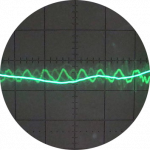First 6 months
First six months of data are primarily about the PV system ( https://ajgdevelop.wordpress.com/2022/10/13/retrofit-8-6-months-of-data/).
The next six months will show the effect of the heat pump on our electricity usage.
Full retrofit story is here ( https://ajgdevelop.wordpress.com/2022/04/17/retrofit-list-of-posts/) in case anyone is interested. Always happy to answer questions if I can 🙂
Hi @alastair.
I enjoyed reading your blog, and indeed I read the whole series. I commend you on your full energy retrofit and also that you braved a few winter months without a heating system!
You said you had roof space in all four compass directions. What is the spread of panels like across the different directions?
It strikes me that you're running your heat pump much like a boiler with an on/off type controller with a timer. Did your installer look at installing weather compensation and having a set back temperature of only a few degrees below the normal temperature? Your heat pump could be more efficient, have less wear and tear on your heating system, and your home feel more comfortable if you looked to run it in a more steady state. By letting your living room - and presumably the rest of your house - fall to 15C at night then ramping up the heat pump to bring it to 20C every day, it's doing more work than it needs to. Moreover, this doesn't even save (electric) energy since it needs to run at a higher flow temperature to do this, and that in turn reduces COP to such an extent that it uses more energy than if you'd kept it at a higher temperature.
Another thing I noticed is that you said you played with TRVs to balance the system, but the system would be better balanced by changing the flow to the radiators (on the other side to the TRV) then setting the TRV so that it cuts in when it really needs to. This helps increase system volume to the heat pump, again increasing efficiencies and elongating cycles. Some people round here even go without TRVs completely or only have them in bedrooms.
Just before I posted this, I saw your other thread about your installation. I can see you're running a fixed flow temp of 45C, so that reinforces my view that you could look into weather compensation to save energy, as especially with mild days like these you could run a lot cooler and get a much higher COP.
Hello!
Thanks for your comments and thanks for reading through all the posts. It's been quite a year so far, and we are looking forward to seeing how things work out this winter.
We have 13 panels on an E/SE facing roof and 7 panels on a S/SW facing roof. We toyed with adding another couple of arrays to the E and W facing garage roof spaces but decided that was overkill.
Cheers for your comments on weather compensation. I've been seeing more and more about that via channels such as Heatgeek and others, and came across this useful tweet too - https://twitter.com/Protons4B/status/1583549752209121280?s=20&t=DW5U5V_HQSSUBbnNgGp8vQ so have been thinking about changing. I got the user manuals out this morning and see that there is a section about turning that on. My biggest unknown has been around how to set a sensible curve, but I guess we can play around with that for a bit. And there's always the amazing knowledge from folk on forums like this one. The TRV thing is also something I am trying to get my head around: are you saying that a more efficient option is to open them all up and then use the weather comp to sort out balanced temperatures?
🙂
Posted by: @alastairHello!
Thanks for your comments and thanks for reading through all the posts. It's been quite a year so far, and we are looking forward to seeing how things work out this winter.
We have 13 panels on an E/SE facing roof and 7 panels on a S/SW facing roof. We toyed with adding another couple of arrays to the E and W facing garage roof spaces but decided that was overkill.
Cheers for your comments on weather compensation. I've been seeing more and more about that via channels such as Heatgeek and others, and came across this useful tweet too -[link removed for brevity] so have been thinking about changing. I got the user manuals out this morning and see that there is a section about turning that on. My biggest unknown has been around how to set a sensible curve, but I guess we can play around with that for a bit. And there's always the amazing knowledge from folk on forums like this one. The TRV thing is also something I am trying to get my head around: are you saying that a more efficient option is to open them all up and then use the weather comp to sort out balanced temperatures?
🙂
A split between SE and SW is a great layout in my opinion!
I think before that unknown is whether or not you can enable it. Do you have an external thermometer installed somewhere? It might also be in the heatpump.
As you say, I think playing around with it is the best way, although you could try to calculate a good starting point if you wished.
I am not a plumber or a heat engineer, so I cannot definitively say what is best, but I would certainly look into balancing your radiators if it hasn't already been done in the first instance. Then you could look into using TRVs as a fail safe for rooms that aren't playing ball or you really want to keep cool. You can of course keep all your TRVs, but maybe just leave them turned up a bit and let the heat pump's controller do its thing before slamming the breaks on with TRVs every time it's a smidgen too warm.
- 26 Forums
- 2,360 Topics
- 53.5 K Posts
- 214 Online
- 6,026 Members
Join Us!
Worth Watching
Latest Posts
-

When I was 18, it wasn't enough to own a car; I had to ...
By Majordennisbloodnok , 12 minutes ago
-
RE: Mitsubishi Ecodan R290 10kW performance
Interesting. Thanks for the info.That would explain th...
By Sheriff Fatman , 20 minutes ago
-
RE: My Powerwall 3 Consumes 3-4 kWh/Day in Self-Consumption: Is This Normal?
@f1p Might be normalmy numbers 3+ year old powerwall 2,...
By ksim , 3 hours ago
-
RE: New Fogstar 15.5kWh upright solution
SITREP #5 (I think) Milestone completed toda...
By GGW , 14 hours ago
-
RE: Octopus Cosy Heat Pump Owners & Discussion Thread
The FT levels off at either the set point OR the minimu...
By AndrewJ , 14 hours ago
-
RE: MyVaillant Connect Regular Disconnect
Thanks. Yes, if the time is consistently 11pm every nig...
By buckwem , 14 hours ago
-

RE: Speedcomfort radiator fans
My take on Speedcomfort radiator fans: If anyone w...
By Mars , 20 hours ago
-
RE: Midea ASHP – how to set weather compensation
@pash44pump I have yet to come across any Clivet or Mid...
By benson , 20 hours ago
-
RE: Who's your electricity provider and what's your tariff?
@transparent Thanks, this helps. Could it be that St...
By Batpred , 21 hours ago
-
RE: Clivet ASHPs and weather compensation
Simon did share a lot of very helpful advice. On furthe...
By ambris , 21 hours ago
-
RE: Home Assistant vs ESPAltherma.
@majordennisbloodnok Thanks very much.
By Ubert767 , 22 hours ago
-

RE: Setback savings - fact or fiction?
I could, but I think we can do better, by plotting hour...
By cathodeRay , 2 days ago
-
RE: Advice on internal circulation pump noise
Extend the primary branch and make sure you have more t...
By ASHP-BOBBA , 2 days ago
-

RE: External pipework insulation
Oh Dear! that's appalling pipe work, should've been in ...
By dgclimatecontrol , 2 days ago
-

RE: Jokes and fun posts about heat pumps and renewables
By Morgan , 2 days ago
-

RE: Controlling Daikin Altherma via P1P2 and Home Assistant
On the contrary, @toodles, that’s a lot of help. I’d ne...
By Majordennisbloodnok , 2 days ago
-

Parsnip, Bacon & Coconut Milk Soup
First let me say, I am only a cook because I am human a...
By Toodles , 3 days ago
-
RE: Electricity price predictions
Ben Watts posted on LinkedIn that he had updated this w...
By Judith , 3 days ago




